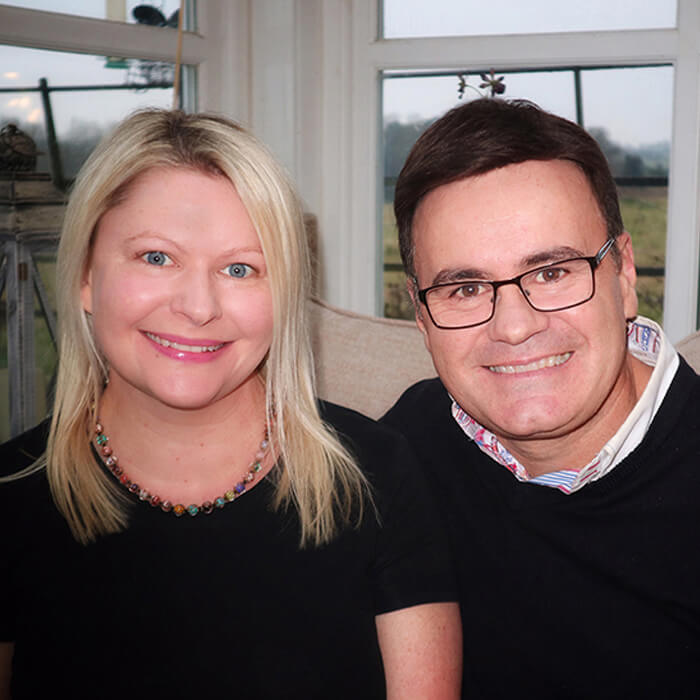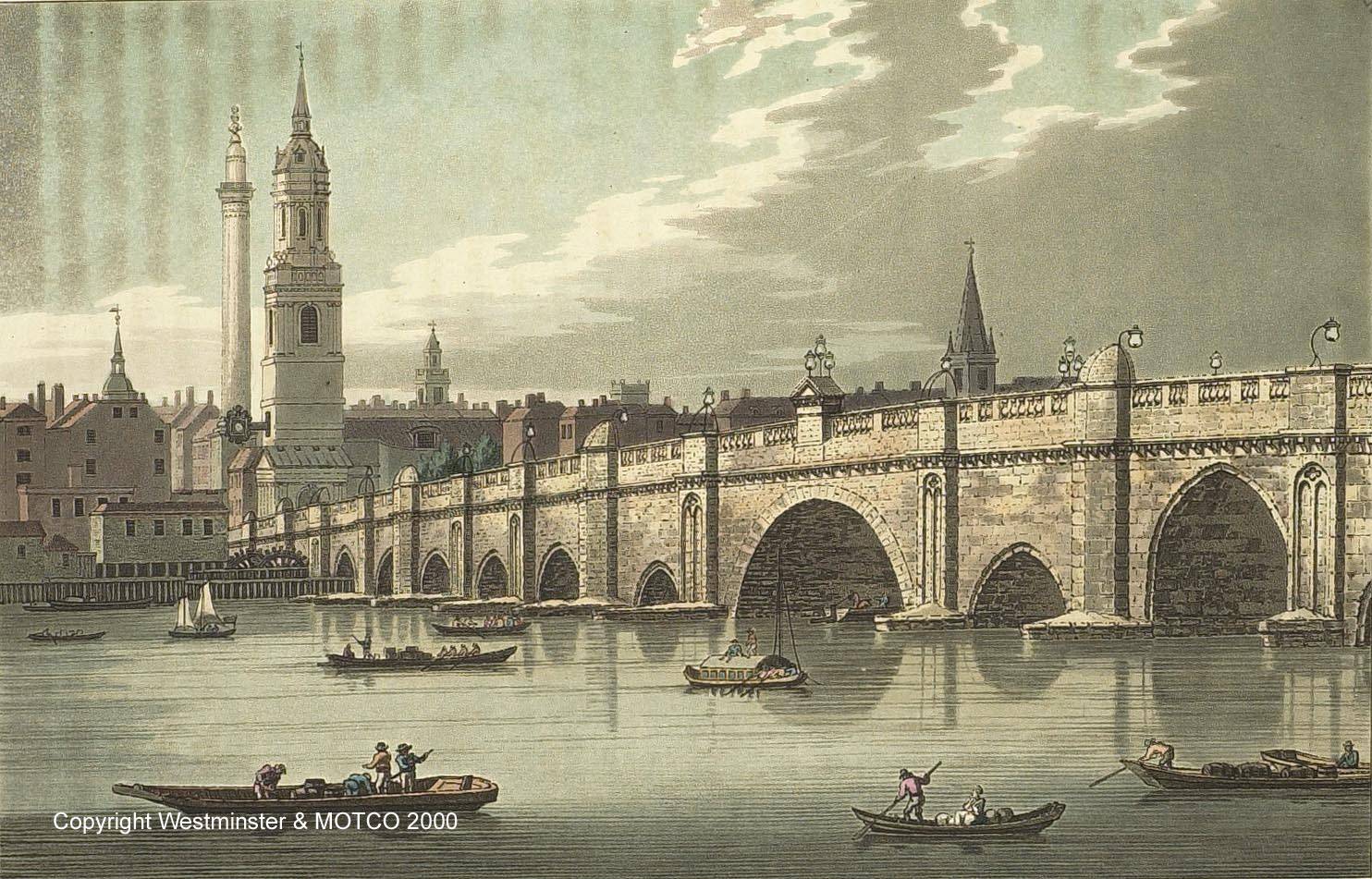
by Sarah Blinco | Jul 14, 2011 | Expats explore London, Travel blogger destinations
I’ve always been drawn to water – it is peaceful and therapeutic – so unsurprisingly, when I have a ‘free’ day I attempt to find activities by my nearest body of agua. In this case, I’m quite fortunate to be close to the beautiful old Thames, so taking advantage of a ray of summer sun today, I jumped on a bus headed for London Bridge. Usually I would simply take the overground to Canada Water and then the Tube two stops to London Bridge, but if I have time I like to take the bus here because it allows me to enjoy all the streets and views of the city that the Underground journey does not.
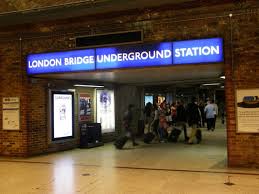
London Bridge is a delightful place to alight because while it is hectic with contemporary traffic of all kinds (people, cars, buses, trains, bikes etc.) it still maintains a feeling of the old world, like Dickens’ London you read about as a child, and I love that the precinct offers paths to old pubs, Shakespeare’s Globe Theatre, The London Dungeon and many other ‘creepy old sites’, as I like to refer to them. My day from London Bridge station then really consisted of me following tourists around!
I briefly took respite from the London Bridge noise by stepping inside peaceful Southwark Cathedral (the oldest cathedral church building in London), lit a candle and wished for a nice future. Back out into the bustling busy world of Borough Market, I followed the helpful signs towards the river. Obligatory frappacino in hand, I walked along the Thames between London Bridge station and Tower Bridge (pictured below), wandering by the HMS Belfast docked in the river, and then happened across an interesting international photo exhibition on display as part of The City of London Festival.
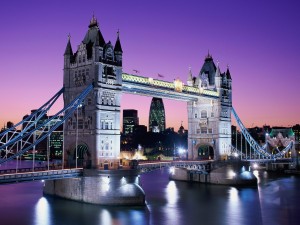
Today I also incidentally entered into a 1-minute game of soccer (football, in these parts) which was progressing in my path (it would be rude to not kick the ball being that it was passed to me!), walked to the top of Tower Bridge to check out the terrific ‘London in Black and White‘ exhibition (on until September 30 2011, for those interested), snapped a couple’s picture by the river, and waited 15-minutes before I could get my own clear shot of the Tower (minus city cruise boats in the foreground).
I stopped for a while to watch the peaceful body of water ebb and flow, and I attempted to record the scene in my mind. I recall children shrieking, dolled-up tourist photographing themselves in front of The Tower of London, and the hum of construction in the distance across the river as ever more buildings are erected. It was a nice day to play a lone explorer, being reminded of all the cool sites on my doorstep at home in London.
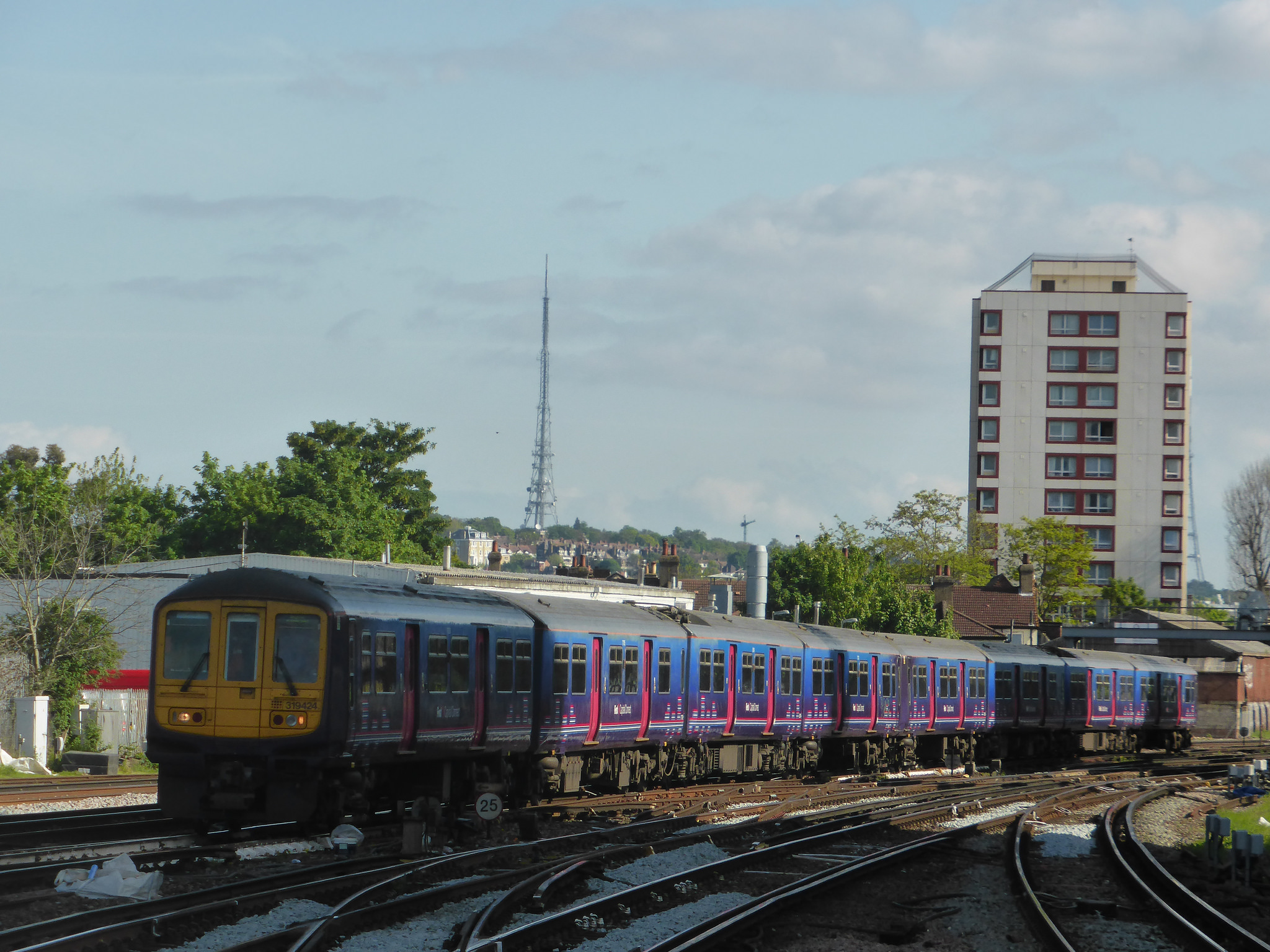
by Sarah Blinco | Jun 29, 2011 | Expats explore London, Travel blogger destinations
About Croydon
This post was originally written in 2011 – one of my first. It’s now 2023, how did that happen? I return to update it because you, dear reader, keep landing on it on a search ‘about Croydon’.
I’d love to know what it is about Croydon that you’re searching for to end up here. Let me know in the comments.
Why Croydon?
There’s been a little heatwave in London over the past few days. It’s summer, June 2011. Evidently those who have suffered most have been commuters on the trains, especially those on the Tube – it’s sweltering down there!
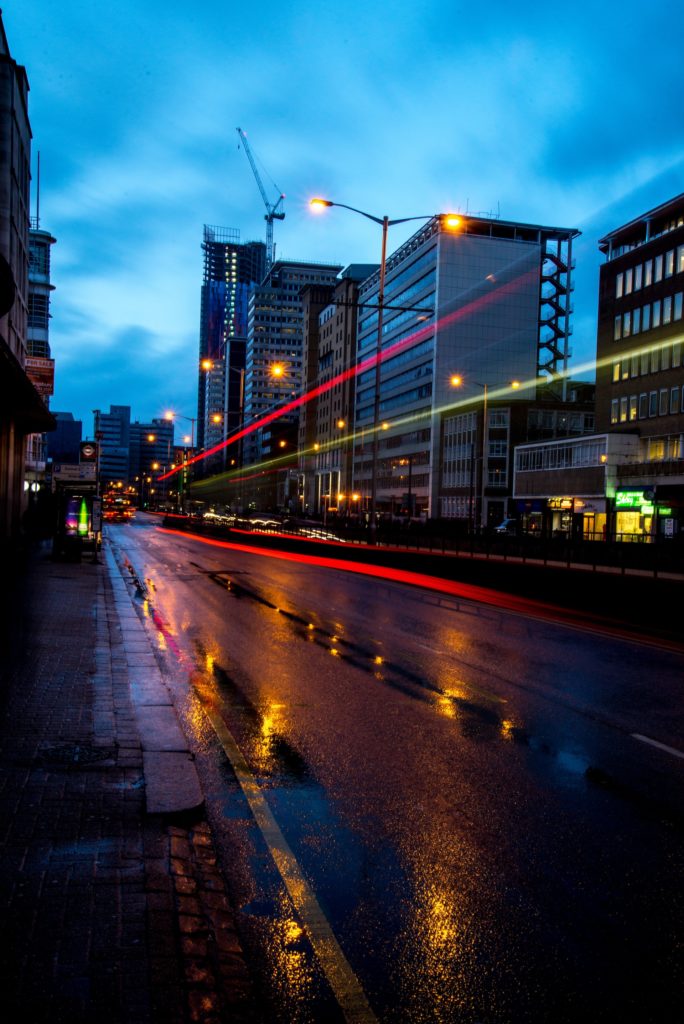
If you’ve been reading my ‘Alight Here‘ blog series about the history and experience at train stations across the Capital, you might wonder about my timing here. Right now in London, no one wants to actually be on a train.
But fret not, to put your minds at ease I’ve placed a special commemorative photo below. I’m confident it won’t be too long until it’s nice and brisk here again!
~ducks head as English co-workers hurl heavy books in this general direction – you see, they love the heat, I dread it… but that’s another story entirely ~
History throwback about Croydon
While it might be unusual for any other traveller to feature an editorial on Croydon, it would be remiss of me to exclude it. Much of my working London life has revolved around ‘alighting’ at East Croydon and West Croydon. The station to the east is 15-minutes from Victoria Station on the Southern Line (pictured below following winter snow fall). West Croydon station is about 45-minutes from Haggerston on the London Overground.
Croydon is located on the natural transport corridor between London and England’s south coast. Hence served by, Southern Train service from Victoria heading to lovely destinations such as Brighton. Historically it was from Croydon to Wandsworth where the world’s first public horse-drawn railway ran from 1803. This positioned Croydon as a key commuter town in the entire region.
My daily view en-route to Croydon
Train trips south towards Croydon are brimming with views of rows upon rows of old London homes. There are many pubs and local high streets. I can also see large lush parks where I envy from afar those out for their morning dog-walks. We are dog people of old.
Croydon Town Centre itself – situated between the East and West train stations – was developed to its present and energetic state from the mid 20th century. I suppose it would be considered ‘small’ by London terms. But, the amusing thing to me is, the mall has a feel distinctly like that of the Queen Street Mall in Brisbane. That spot was the centre of Queensland’s capital city. Actually, it’s changed a lot in recent years too, but it was a major shopping destination for locals from all around the south-east! Funny how Croydon could remind me of such a place. Maybe it’s the summer heat :)
My Croydon
 Probably not somewhere you’d end up as a tourist, but definitely a nice spot with friendly people, and great shopping (without the London high street crowds). Sentimental because it’s where I first trudged to work in snow (a novelty for me), where I enjoyed many a warm Starbucks latte on cold winter mornings, where I’ve learned some brilliant skills in PR (plus honed my tea making prowess). I’ve laughed a lot with new friends – Wendy, Nick, Nicola, Tania, Kerry, Audrey, Lotte, Amy (and even newer friends as of very recently, Paloma, Jess and Rebecca) – along the way. S x
Probably not somewhere you’d end up as a tourist, but definitely a nice spot with friendly people, and great shopping (without the London high street crowds). Sentimental because it’s where I first trudged to work in snow (a novelty for me), where I enjoyed many a warm Starbucks latte on cold winter mornings, where I’ve learned some brilliant skills in PR (plus honed my tea making prowess). I’ve laughed a lot with new friends – Wendy, Nick, Nicola, Tania, Kerry, Audrey, Lotte, Amy (and even newer friends as of very recently, Paloma, Jess and Rebecca) – along the way. S x
We are now into our third time living and working in the UK. Find out about our latest adventures here.
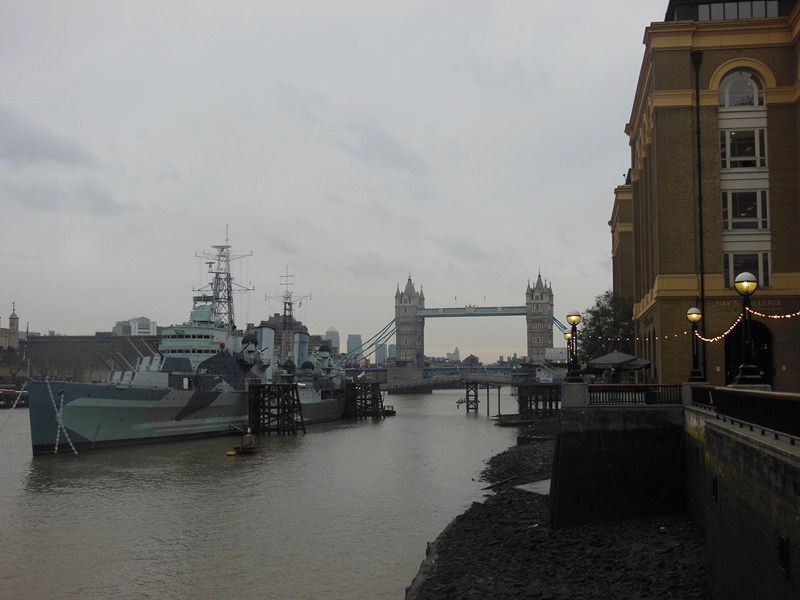
by Sarah Blinco | Jun 25, 2011 | Expats explore London, Royal England, Travel blogger destinations
About Green Park and London Bridge
With only a few weekends to explore the parts of London we haven’t been to (and those we’d like to see again) we ventured out early to see how the ‘other half’ live in the wealthy Mayfair district. We researched the precinct and discovered that the majority of ‘tourist’ action and celebrity spotting occurs at the historical but chic Shepherd Market, a charming little piazza developed in the late 1730s, hidden away between Piccadilly and Curzon Street (just a few minutes walk from Green Park station; not far at all from The Ritz where Rhonda and I recently dined). The main road near the tube was buzzing and busy (as it usually is) with tourist buses stopping every few minutes to collect visitors for their trips around the city; and artists who were setting up dozens of paintings for sale along the walled entrance into Green Park itself.
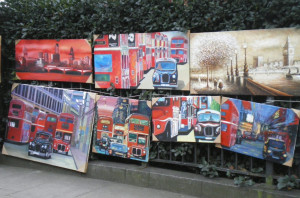
We wandered down a signed old London alleyway that pointed the way towards Shepherd Market but unfortunately when we arrived there wasn’t much happening, so we stopped for a latte, meandered around the square and admired the old Victorian pubs and quaint boutiques for a while, then consulted the trusty BlackBerry for alternative Saturday exploration options.
We’re on a budget at the moment so looked up ‘free London attractions’. Of all the options, the Kensington Roof Gardens seemed like a great idea, although apparently they’re closed until mid-week (so stay tuned for that update); we decided instead to head back onto the Jubilee Line to London Bridge where I’d seen some interesting old shops and pretty cafes a few weeks earlier.
As it turns out, London Bridge is absolutely humming on Saturdays because of the famous Borough Market – a gathering that we’d even seen featured on The Travel Channel but had never been to because we rarely ventured to this side of London (until moving to the east in April). The whole area was loud and busy, with motor vehicles, train traffic, and thousands of people all out to score a delicious bargain at one of the many poultry, fish, curry, wine, cake, bread, cheese, fruit and vege stalls – a trading tradition that dates back beyond 1014!
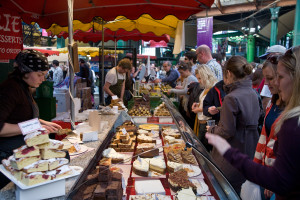
We were in our element, sampling all manner of delights, and even found a stall that was promoting local wines – for a mere fiver we sampled six glasses (rosés, whites and reds) that are ‘home made’ in the UK, and learned about the history thanks to our lovely wine connoisseur, Dominique – a special shout-out to www.winepantry.co.uk for this experience, and FYI we did choose to purchase a lovely bottle of Biddenden Gribble Bridge Rosé (budget… out the window again this weekend!).
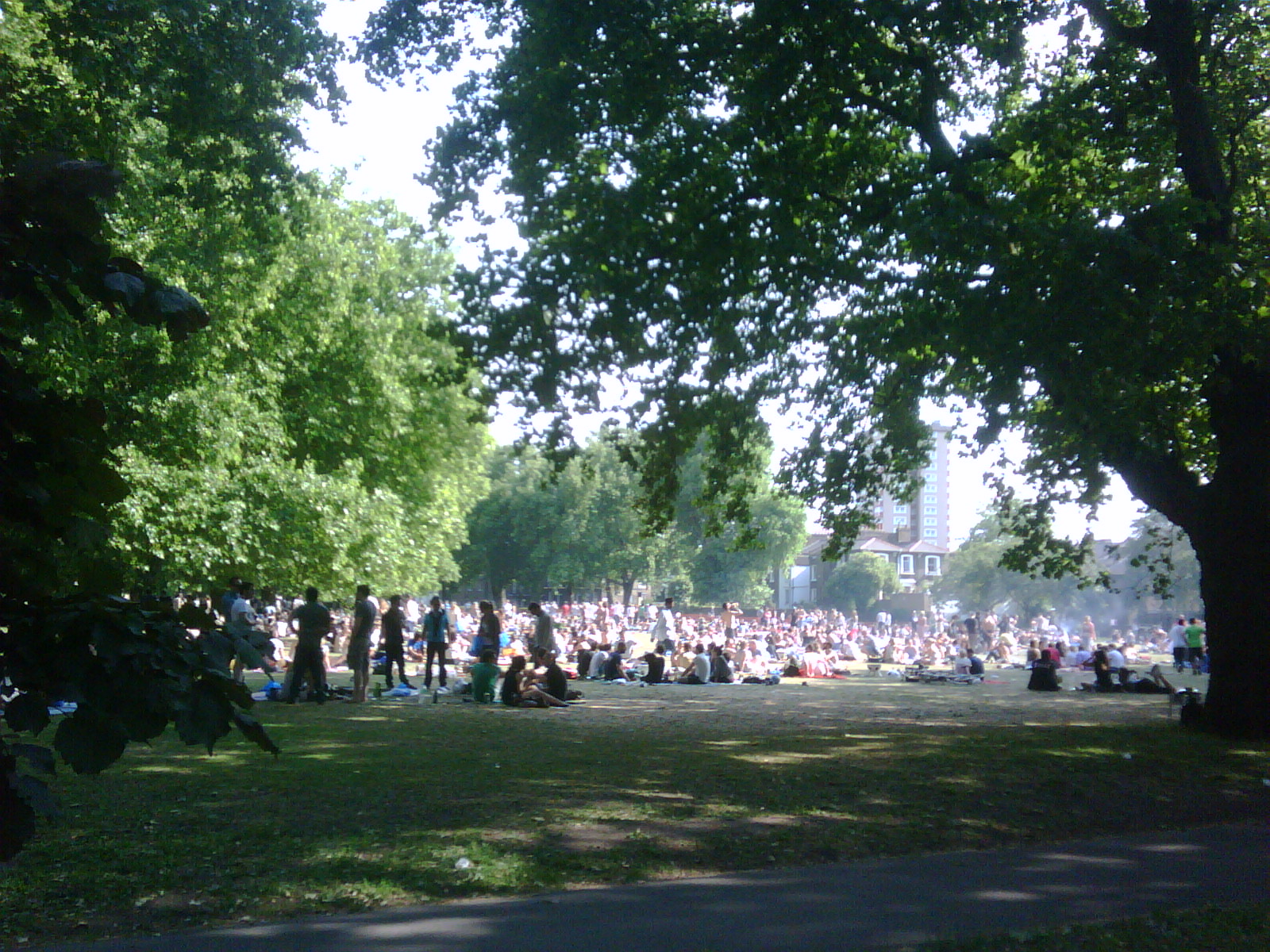
by Sarah Blinco | Jun 24, 2011 | Expats explore London, Travel blogger destinations
All about London Fields
I’m presently sitting under a sky threatening to pour with rain (probably no different from 300 years ago); there’s some kind of Reggae music playing loudly over the bar’s sound system, Wimbledon screening live on the surrounding TVs and the simultaneous sounds of coffee and beers being expertly served.
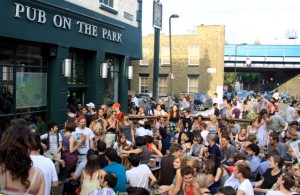
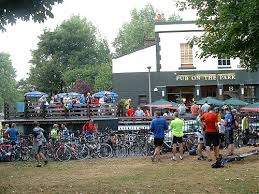
A couple of minutes walk up the road on Hackney‘s high street, people are going about their Friday afternoon business: shopping for the weekend, rounding up their day’s work and preparing to head to the closest pub for a traditional Friday afternoon pint (again, I imagine this is no different to 300 years ago, where apparently there was something like 21 pubs along the main streets in this precinct… it must have been just like Shoreditch High Street today)!
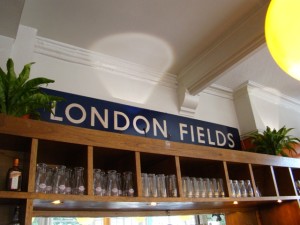
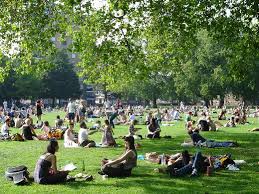
Hackney, the borough in which London Fields belongs, was the largest parish in the county of Middlesex. Being so very close to the City of London, the ‘suburb’ as we would deem it in Australia, had been a favourite residence of wealthy Londoners for several hundred years. Hackney was known for its healthy air and pure spring waters, and apparently became increasingly attractive following the Great Plague of London in 1665, because comparatively, with only 132 deaths, the region had not been extensively affected. The following year of course, was the Great Fire in London, which was further cause for residents to seek alternative locations to live. The area where we reside today was attractive to wealthy ‘locals’ who wished to be close to the Court, entertainment and the financial centre of the Kingdom; but because there was so much space available, these residents could also enjoy the benefits of ‘country living’ – I definitely wouldn’t deem the area ‘country’ today – imagine that!
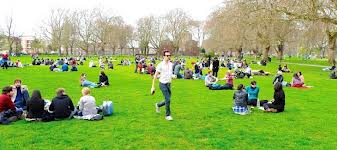
Hackney was declared in 1756 to “excel all other villages in the Kingdom in the ‘opulence’ of its inhabitants” (trust us to like it here then, although we are only a couple of hundred years too late)!
I’ve just seen a dog that very closely resembles an Australian Kelpie, jumping around on top of a pile of grass and dirt that the council has obviously recently cleaned up. He proudly produces a large stick to his owner, then proceeds to dig for other inevitable hidden treasures. It seems appropriate though, that this dog should be here playing amongst the others (all small ‘toy’ dogs by comparison), because as I study an old map of the area, I notice that there are many references to its farming past: Sheep Lane, Mutton Lane, Lamb Lane (now Forest Road) and the popular Cat & Mutton pub (in the 1800s known as Shoulder of Mutton and Cat) on a diagonal corner from where I’m located at this very moment. The Cat & Mutton is positioned on the corner of Broadway Market (as it was eventually Christened in 1937), the area that will be buzzing with its lively Saturday market tomorrow (as it is every weekend), and that was evidently developed to its present state in around 1860. Until the 1860s (when apparently much of the area was finally built-up), the whole precinct was in fact pastureland. It would have been a bit like Cairns when I was growing up. Again, imagine that!
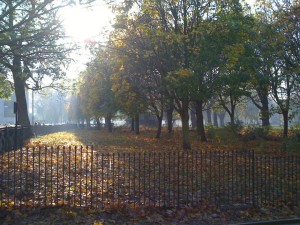
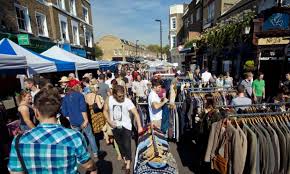
At the moment (as I wait patiently for the crowd at the bar to fall back so I can order another beverage) I gaze out upon the famous old trees of what is now known as London Fields (park). These trees are over 100 years old (and actually quite similar to those lining Ruthven and Margaret Streets in Toowoomba (Queensland) outside the Grammar School – somehow I always knew those trees reminded me of England, although I’d never been here…). I can imagine the cricket games that were played (the first recorded here was actually in 1802 when a team of ’11 gentlemen’ from Clapton played a local team of ’11 gentlemen’ for a wager of 500 guineas); and military training that occurred (first for fear of French invasions, then German…).
What those trees must have seen. And what they’ve survived! I was saddened to read the date, September 21, 1940, when the area was heavily bombed – Richmond Road and Eleanor Road received direct hits.
Surprisingly, given its prosperous past and thriving development booms, the ‘east’ fell into misfortune around the turn of century (during the Industrial Revolution), and the situation continued to worsen following the two world wars, and then a string of government decisions and funding cuts that negatively affected the surrounding areas. Prior to moving to London even I was prejudiced against the area, claiming “I don’t want to go east”. Again, I learn my lesson to not judge before I’ve experienced! Turns out the ‘East’ is undergoing a renaissance – a reformation, if you will. With the opening of the brand new London Overground line but one year ago, the area has transformed overnight from being under serviced and lacking transport and convenience amenities, to being super-trendy, popular with young and old alike (although there is an extremely contemporary crowd that floats around London Fields each weekend… you know, like us ;-) ; there are new apartment developments surrounding every stop along this convenient and extensive modern London train line (including Haggerston, Hoxton, Dalston and Hackney), and once again the gorgeous Georgian period homes that we’re so enamoured of are reflecting their former glory, as the area resurrects into what we anticipate will one day, once again, be one of the areas to reside in London.

by Sarah Blinco | Jun 23, 2011 | Expats explore London, Travel blogger destinations
All about Haggerston and London Fields
As I walk back towards home from Haggerston station after seeing my love (that would be Cooper) off to work, it occurs to me that I probably have very little time left in what has become my new home. Saddened by this sudden realisation, I stop mid stride to take a look around, attempting to record it in my brain. It’s quiet here this morning, all except for a soft breeze and the sound of the 7am trains pulling in overhead. A black and white cat appears by me in front of the Duke of Wellington pub where I’ve paused. She stops to peer up at me as if to assess whether I’m friend or foe; we eye each other for a moment before she nods nonchalantly and proceeds with her morning’s exploration. Going home won’t be all that bad, after all, I get to see my dog again. We sorely underestimated how much we’d miss Harry, ‘our child of nine years’. I’m not a ‘cat person’, but here I’ve even begun to develop a soft spot for these slinky little animals – they’re furry and occasionally friendly – anything to remotely fill the ‘Harry void’. We’d fly him across from Australia, but he’s been in a good home for the past eleven months and we simply couldn’t put him through a long-haul flight and possible quarantine, especially now that he’s in the later stages of his life. So, we’re back to going home. I shouldn’t be sad, we (hopefully) have travelling time ahead of us yet, but I am teary at the thought of leaving this place, my new home where I’ve happily and peacefully settled.
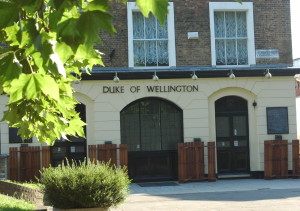
Snapping out of my thoughts as I notice a park-dweller glaring suspiciously at me, I continue on my way. Crossing Queensbridge Road onto Middleton Road, I take special note of the buildings, developed, I read, by Sir William Middleton (a relative of the new Duchess of Cambridge, aka Kate, I’m assuming) at the beginning of the 19th Century. I enjoy walking in this area past these beautiful Georgian period homes that lead into lovely London Fields. Although I know there have been issues with gangs at times in the past, in my experience here I’ve just seen people having fun, BBQs in the sun, dogs playing, Broadway Market action and a generally great vibe and energy that’s made us both happy. Usually we rush about, but in this area we tend to stroll and take in the environment, patting dogs, making friends in the bars and admiring the old architecture of surrounding homes.
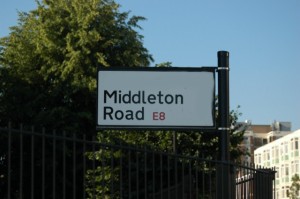
No point in being miserable about leaving though, because life goes on, and as far as ‘problems’ go, this isn’t a critical one by any stretch of the imagination. I’m just a sentimental girl (especially when I read my posts from this time last year, as I prepared to journey over here to the ‘Mother Land’ /unknown territory); but I realise I’m lucky to have had the experience in the first place. It’s not been perfect or entirely as I would have imagined, but we’ve settled, lived and conquered London – something I never envisaged as being possible.
Just as I open the gate to our building I see a tiny ray of sunshine finally poking through the clouds following weeks of wind and rain. Hopefully we’ll have some nice days between now and when we leave. With that in mind I’ve resolved to spend some of my spare days recording what it’s like on any given day at the precincts that make this city tick – at tube / train stops around London – stops that act as vital arteries to this city’s existence. Landmarks that see thousands of commuters pass each day, for work, travel and leisure. I want to record what it’s like to sit and watch the Thames in 2011, or what the townsfolk are doing within historical Covent Garden or down by St. Paul’s. I’ll stop at train stations to capture their activity and reflect on what might have been going on there in the past. Each stop in London offers new and exciting parks, pubs, restaurants, cafes and hidden old gems, and being that I’m a tad obsessed by The Tudors at the moment, this seems like a fitting and worthwhile pastime, and conclusion to life as we know it in the UK. Who knows, maybe one day I’ll have the opportunity to come back and compare my musings at some crazy future date like 2031 (if the world doesn’t actually end next year, that is). Or perhaps, as others have come to England and followed in the path of Wordsworth, Shakespeare and Austen, maybe some soul who is a youngster this year, will follow in my steps and add their findings to this entry in the future. Who knows how it will have changed. I do hope the old homes are here though, and I would certainly assume that the Duke of Wellington pub (the same place we saw the historical Royal Wedding of April 29 take place) would still be standing… the pubs always are!
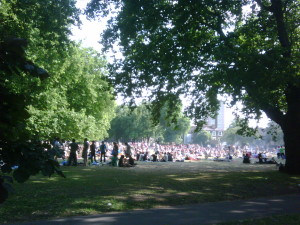
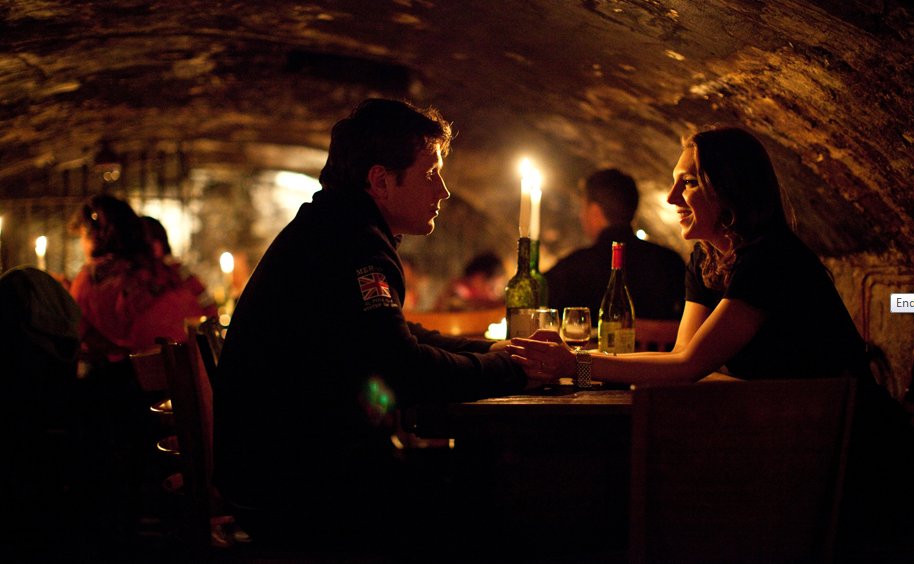
by Sarah Blinco | Jun 22, 2011 | Expats explore London, Foodie London vlogs
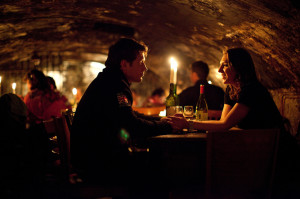
Thankfully, my two lovely mates, Nicole and Iain, thought to take me for a cheeky drink at a charming little place called Gordon’s Wine Bar. Located just near Embankment tube (but not too far from Covent Garden, or Charing Cross tube), head down some steep narrow stairs to a confined, cosy space lit by candles. It’s almost ‘tunnel’ like – probably not for the claustrophobic – but definitely for those who tend towards old, historical and possibly a little creepy (in a cool way of course, chimes the crazy X-Files fan in the back of my mind).
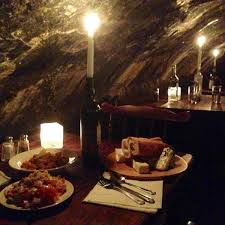
Another nice feature, aside from the general ambiance, is that the walls are lined with old newspaper clippings and front pages from The Daily Mail, The Observer etc. from over the past 60 years or so. They have even included The Evening Standard from April 29, 2011 (a paper I also have stashed away to commemorate The Royal Wedding).Evidently, this bar is the oldest wine bar in London (est. 1890), and I do kind of like that it’s named after my grandfather (well, not really but he was a Gordon, and a popular publican in Toowoomba ‘back in the day’, so it’s fitting…).
I’ve had a few friends pop up on Facebook who also know of this little ‘hidden’ gem, although from what I understand it can be near impossible to get through the door most afternoons and weekends… old and candlelit is evidently favoured by many more than just me. Anyway, I’ve nabbed some images from their website to give you a better idea of what it looks like inside. S X
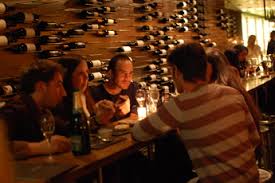
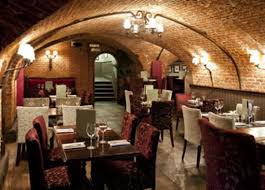






 Probably not somewhere you’d end up as a tourist, but definitely a nice spot with friendly people, and great shopping (without the London high street crowds). Sentimental because it’s where I first trudged to work in snow (a novelty for me), where I enjoyed many a warm Starbucks latte on cold winter mornings, where I’ve learned some brilliant skills in PR (plus honed my tea making prowess). I’ve laughed a lot with new friends – Wendy, Nick, Nicola, Tania, Kerry, Audrey, Lotte, Amy (and even newer friends as of very recently, Paloma, Jess and Rebecca) – along the way. S x
Probably not somewhere you’d end up as a tourist, but definitely a nice spot with friendly people, and great shopping (without the London high street crowds). Sentimental because it’s where I first trudged to work in snow (a novelty for me), where I enjoyed many a warm Starbucks latte on cold winter mornings, where I’ve learned some brilliant skills in PR (plus honed my tea making prowess). I’ve laughed a lot with new friends – Wendy, Nick, Nicola, Tania, Kerry, Audrey, Lotte, Amy (and even newer friends as of very recently, Paloma, Jess and Rebecca) – along the way. S x



















